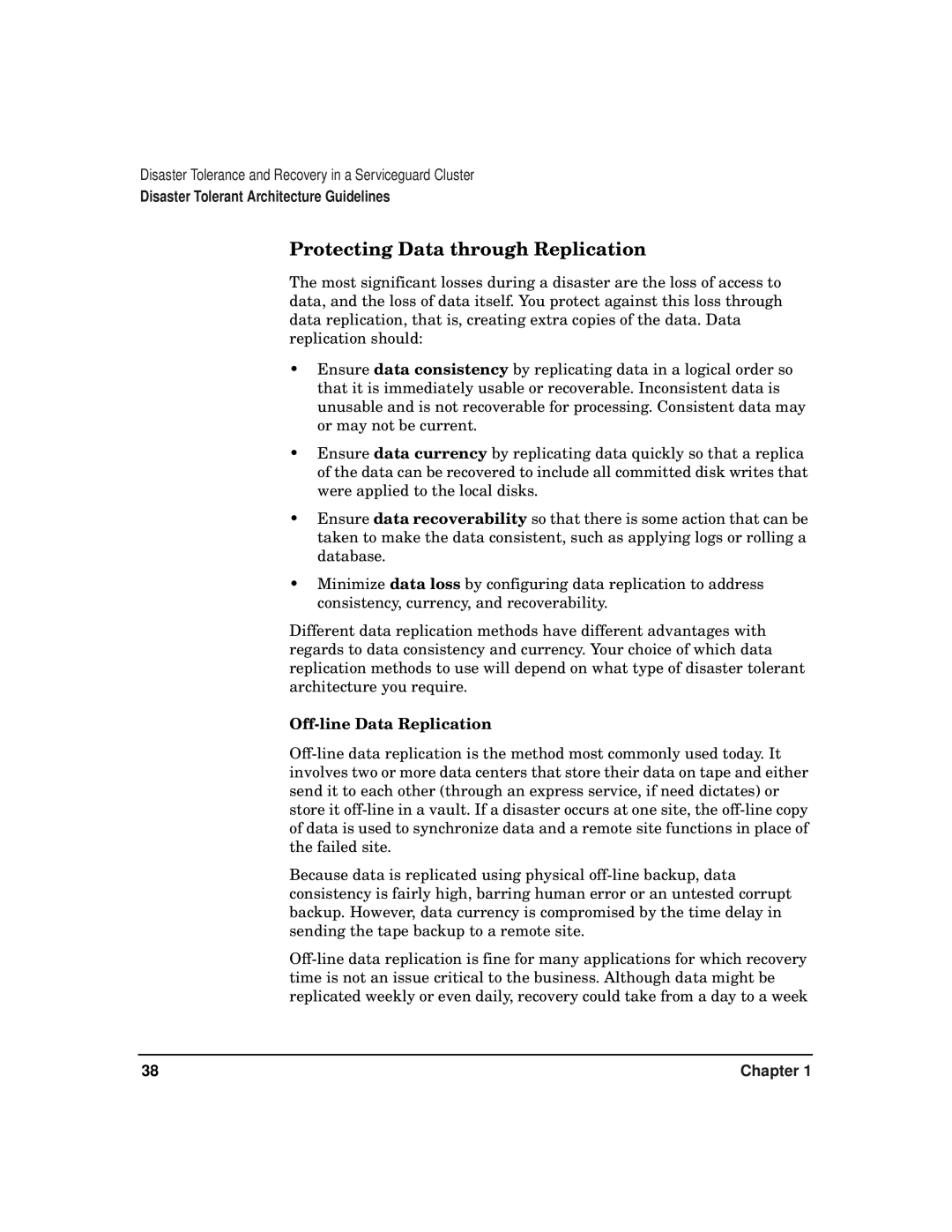Disaster Tolerance and Recovery in a Serviceguard Cluster
Disaster Tolerant Architecture Guidelines
Protecting Data through Replication
The most significant losses during a disaster are the loss of access to data, and the loss of data itself. You protect against this loss through data replication, that is, creating extra copies of the data. Data replication should:
•Ensure data consistency by replicating data in a logical order so that it is immediately usable or recoverable. Inconsistent data is unusable and is not recoverable for processing. Consistent data may or may not be current.
•Ensure data currency by replicating data quickly so that a replica of the data can be recovered to include all committed disk writes that were applied to the local disks.
•Ensure data recoverability so that there is some action that can be taken to make the data consistent, such as applying logs or rolling a database.
•Minimize data loss by configuring data replication to address consistency, currency, and recoverability.
Different data replication methods have different advantages with regards to data consistency and currency. Your choice of which data replication methods to use will depend on what type of disaster tolerant architecture you require.
Off-line Data Replication
Because data is replicated using physical
38 | Chapter 1 |
